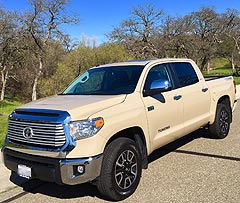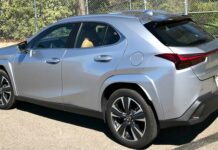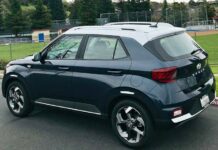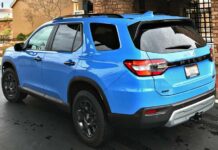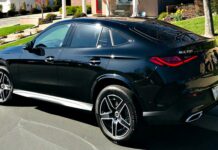Roseville, Calif. – Judging by sales for 2016, Americans love their trucks.
Last year Ford’s F-Series pickup was the top-selling vehicle in the U.S. with 820,799 trucks sold. That equates to nearly 94 trucks sold per hour! The year ended with a bang for Ford with 87,512 trucks sold in December 2016.
Mid-size trucks were the favored brand, out-selling full-size trucks a year ago. Auto manufacturers understand the trend and are not producing as many large trucks in 2017. From a personal standpoint, a-not-so cumbersome mid-size truck is more appealing. Yet there are still plenty of guys out there who love their large, behemoth trucks.
Toyota hopes to attract more buyers this year to the 2017 Toyota Tundra, which ranked sixth in overall truck sales (115,489) for 2016. The Tundra’s strong reliability and resale value are among its top selling points.
2017 Toyota Tundra
* Performance: 4.6-liter, V8, 310 horsepower; 5.7-liter, V8, 381 horsepower
* Mileage estimate range: 14-18 mpg; 13-18 mph
* Price: $30,120 to $46,110
* Warranty: 3 years/36,000 miles; drivetrain 5 years/60,000 miles; roadside assistance 2 years/unlimited; corrosion 5 years/unlimited
Like many trucks, the Tundra provides a variety of trim models. It has three cab styles – regular, extended and CrewMax. There are two wheelbases and the Tundra features three bed lengths – 5.5-foot short bed, a 6.5-foot standard bed, and the long bed that measures 8.1-feet.
Despite the versatility, not everyone is enamored with the Tundra. The knock against the Toyota truck is that domestic trucks have better towing, payload and fuel economy. For instance, at full capacity the Tundra can tow 10,500 pounds. The Chevy Silverado has a 12.500 towing capacity and the Ford-150 models have limits of 12,200. The extra towing capacity and curb weight (payload) appeals to guys who love full-size models.
While some full-size trucks offer a V6 engine, the Tundra comes with a pair of V8s with six-speed automatic transmission. The test-driven model here was the larger of the two engines, a 5.7-liter, V8 that generates 381 horsepower and 401 pound-feet of torque. It’s a bit of a gas guzzler (13-18 mpg), but is impressive going from 0-60 in 6.8 seconds.
The Tundra’s smaller engine is a 4.6-liter, V8 that produces 310 horsepower and 327 pound-feet of torque. It isn’t much better on gas (14-18 mpg) and the maximum towing capacity is 6,800 pounds.
This truck has a light steering feel that’s admirable and delivers a relatively quiet ride, even at high freeway speeds. Reportedly, the 4×4-equipped Tundra does well in off-road situations. What’s not so great is the Tundra’s stiff ride quality.
The 2017 Tundra presents user-friendly technology in an attractive cabin. All models, even the base one, are equipped with the Entune touchscreen interface that has smartphone connectivity. The system is not difficult to master. Drivers will like that the controls and knobs are within easy reach.
Depending on the model, the Tundra can seat three (regular cab) to five or six people (extended, crew-cab). Seating is roomy and comfortable for front seat occupants. The rear seats are also very comfortable with solid leg and head room. Double cab models have the choice of a standard bed (78.7 inches) or a much longer one (97.6 inches). The largest Tundra (CrewMax) has a large cab with a short bed at 66.7 inches. The flip-up bottom cushions are terrific for storing tools and other items.
Although it has many fine qualities, some of its rivals provide more options than the Tundra, which was basically unchanged for 2016. Since the last major redesign was many years ago, the Toyota should consider more changes for next year’s model.
(21+ years strong)
Welcome to the brighter side!
Get in front of local customers! 24/7 (365)



